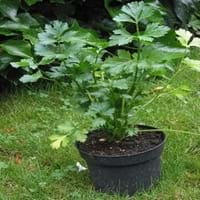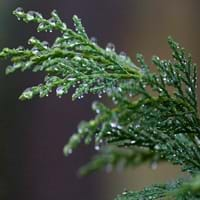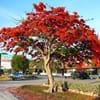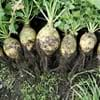Life Span
Annual or Biennial
Perennial
Type
Vegetable
Needled or Scaled Evergreen
Origin
Europe, Northern Africa, Asia
Not Available
Types
Not Available
not available
Habitat
Coastal Regions, Marshy ground, Wet ground
All sorts of environments, Alpine Meadows, High elevation, Hilly upland habitat
USDA Hardiness Zone
Not Available
6-9
Sunset Zone
Not Available
3b, 4, 5, 6, 7, 8, 9, 10, 11, 12, 13, 14, 15, 16, 17, 18, 19, 20, 21, 22, 23, 24
Habit
Upright/Erect
Pyramidal
Flower Color
White
Not Available
Flower Color Modifier
Bicolor
Bicolor
Fruit Color
Tan, Brown
Brown
Leaf Color in Spring
Light Green
Green, Blue Green, Gray Green
Leaf Color in Summer
Green, Light Green
Green, Blue Green, Gray Green
Leaf Color in Fall
Green, Light Green
Green, Blue Green, Gray Green
Leaf Color in Winter
Not Available
Green, Blue Green, Gray Green
Leaf Shape
Irregular
needle shaped
Plant Season
Spring, Summer
Spring, Summer, Fall, Winter
Sunlight
Full Sun
Full Sun
Type of Soil
Loam
Clay, Loam
The pH of Soil
Neutral, Alkaline
Acidic, Neutral, Alkaline
Soil Drainage
Well drained
Well drained
Bloom Time
Late Spring
All year
Tolerances
Drought
Cold climate, Deer resistant
Where to Plant?
Container, Ground
Ground
How to Plant?
Seedlings, Transplanting
Hardwood Cuttings, Transplanting
Plant Maintenance
Low
Medium
Watering Requirements
Keep ground moist, Requires regular watering
Average Water Needs
In Summer
Lots of watering
Lots of watering
In Spring
Moderate
Moderate
In Winter
Average Water
Average Water
Soil pH
Neutral, Alkaline
Acidic, Neutral, Alkaline
Soil Type
Loam
Clay, Loam
Soil Drainage Capacity
Well drained
Well drained
Sun Exposure
Full Sun
Full Sun
Pruning
Remove damaged leaves, Remove shoots
Prune for size control, Prune if you want to improve plant shape, pruning needed for strong structure, Remove damaged leaves, Remove dead branches, Remove dead leaves
Fertilizers
Less fertilizing
All-Purpose Liquid Fertilizer, slow-release fertilizers
Pests and Diseases
Bacteria, Downy mildew, Fungal Diseases, fungus, Mosaic viruses, Pink Root, Red blotch
Canker, Root rot, Stigmina needle blight
Plant Tolerance
Frost
Cold climate, Deer resistant
Flowers
Showy
Not Available
Flower Petal Number
Single
Single
Fragrant Bark/Stem
Yes
No
Foliage Texture
Coarse
Fine
Foliage Sheen
Glossy
Matte
Attracts
Insects, Mice, Rodents, Spider Mites
Birds
Allergy
Irritation to stomach
Unknown
Aesthetic Uses
Not Available
Formal Garden, Ornamental use, Showy Purposes, Woodland margins
Beauty Benefits
Good for skin, Improve skin condition, Moisturizing, Skin Problems
Not Available
Environmental Uses
Air purification, Food for animals, Food for birds, Food for insects
Air purification
Medicinal Uses
Cancer, Combats Stress, Eye Problems, High blood pressure, High cholestrol, Indigestion, Inflammation, Weight loss
Not Available
Part of Plant Used
Leaves, Seeds
Not Available
Other Uses
Employed in herbal medicine, Oil is used in perfume, soaps, creams, etc., Used As Food, Used for its medicinal properties, Used as a spice
Acts as a natural source of rain water for birds and insects., deer resistant, Used as Christmas Tree
Used As Indoor Plant
Yes
No
Used As Outdoor Plant
Yes
Yes
Garden Design
Container, Edible, Herb / Vegetable
Feature Plant, Hedges, Mixed Border, Screening, Wind Break
Botanical Name
APIUM graveolens
X CUPRESSOCYPARIS leylandii
Common Name
Celery
Leylandii
In Hindi
अजवायन
Leyland cypress
In German
Sellerie
Leyland-Zypresse
In French
Céleri
Cyprès de Leyland
In Spanish
Apio
Cupressus leylandii
In Greek
Σέλινο
Leyland Cypress
In Portuguese
Aipo
Cipreste-de-leyland
In Polish
Seler
Cyprysowiec Leylanda
In Latin
apium
Leyland Cypress
Phylum
Tracheophyta
Coniferophyta
Class
Magnoliopsida
Pinopsida
Family
Apiaceae
Cupressaceae
Clade
Angiosperms, Asterids, Eudicots
Not Available
Tribe
Apieae
Not Available
Subfamily
Apioideae
Not Available
Number of Species
Not Available
Not Available
Importance of Celery and Leyland Cypress
Want to have the most appropriate plant for your garden? You might want to know the importance of Celery and Leyland Cypress. Basically, these two plants vary in many aspects. Compare Celery and Leyland Cypress as they differ in many characteristics such as their life, care, benefits, facts, etc. Every gardener must at least have the slightest clue about the plants he wants to plant in his garden. Compare their benefits, which differ in many ways like facts and uses. The medicinal use of Celery is Cancer, Combats Stress, Eye Problems, High blood pressure, High cholestrol, Indigestion, Inflammation and Weight loss whereas of Leyland Cypress is Not Available. Celery has beauty benefits as follows: Good for skin, Improve skin condition, Moisturizing and Skin Problems while Leyland Cypress has beauty benefits as follows: Good for skin, Improve skin condition, Moisturizing and Skin Problems.
Compare Facts of Celery vs Leyland Cypress
How to choose the best garden plant for your garden depending upon its facts? Here garden plant comparison will help you to solve this query. Compare the facts of Celery vs Leyland Cypress and know which one to choose. As garden plants have benefits and other uses, allergy is also a major drawback of plants for some people. Allergic reactions of Celery are Irritation to stomach whereas of Leyland Cypress have Unknown respectively. Having a fruit bearing plant in your garden can be a plus point of your garden. Celery has no showy fruits and Leyland Cypress has no showy fruits. Also Celery is not flowering and Leyland Cypress is not flowering . You can compare Celery and Leyland Cypress facts and facts of other plants too.





